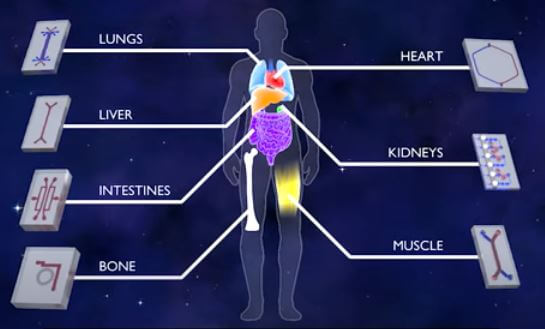Tissue chips in space – Also known as organ-on a chip, the tissue chip is a micro-physiological system that is a recent advancement in the field of cell biology. The National Center for Advancing Translational Sciences (NCATS) in partnership with International Space Station National Laboratory (ISS National Lab, U.S.) planned to test the effect of microgravity on test tissue chips. This biomedical research performed at the International Space Station ultimately intends to help in improving the health standard of people here on Earth, as well as, in space from a future perspective.
Table of Contents
What are tissue chips?
You must be familiar with the different kinds of chips (referred to as Integrated Circuit) used in electronic gadgets. These chips are built on a semiconductor material. On the other hand, a tissue chip is a 3D matrix made of flexible plastic that houses a group of living human cells called tissue to mimic human organs. Depending on the type of cells the chip could be a lung chip, bone marrow chip, kidney chip, blood-brain barrier chip, etc. The circuitry of tissue chips consists of ports and microfluidic channels to provide nutrients and oxygen to the cells. These vasculature channels also help in taking away the detritus. The size of this miniature organ-on a chip could be in between a quarter and a house key.

Impact of microgravity on Human Physiology
Microgravity means less effect of gravitational force on an object and it is easily observed in space. It has been found that Microgravity is one of the biggest reasons for faster aging. Exposure to microgravity for a longer time results in muscle atrophy (muscle loss), osteoporosis (bone loss), reduced cardiac functions, immunodeficiency, etc. We all know, for a human being, each of these conditions is linked to aging. Deployment of tissue organ-on a chip to the ISS and their study will broaden our understanding of the aging process. This will help us in targeting the molecular sites responsible for aging to reduce its rate.
Current Events From Science And Technology – ➤ The Unicorn Black Hole ➤ Rare Quadruple Quasars Discovered ➤ Muon g-2 Experiment At Fermilab ➤ First Arab Woman Astronaut ➤ NASA’s Chandra X-ray Observatory
Organ-on a chip for improved drug testing
Clinical detection of any novel disease on Earth takes a lot of time but this process is accelerated in space. The other problem is that not all trials of human drugs can be done on animals. For better testing results if trials are performed on humans then there are chances of toxicity and less efficacy of drug test. Trials of new drugs on tissue chips in space can accelerate the therapeutic modeling. The need for early-stage human trials in a drug development process can also be eliminated by using organ-on a chip.
Timeline of Tissue chips in Space
- By observing the problems associated with 2D cell culture and animal testing, NCATS is 2012 sponsored different projects to develop 3D micro-physiological system technologies for modeling human organ functions. A team from the University of Washington was selected for modeling kidney-on a chip.
- In 2016, ISS National Lab and NCATS announced a funding opportunity for a 4-year collaboration. The NCATS provided $12 million in funding to assist research on tissue chips in space at the ISS National Lab.
- In October 2018, the National Institute of Biomedical Imaging and Bioengineering (NIBIB) came along with the ISS National Lab and NCATS for the collaboration.
- The launch of various organ-on a chip in space in the year 2019 and 2020 includes lung chip, bone-marrow chip, bone, and cartilage chips, kidney chip, blood-brain barrier chip, etc.
- The latest launch of tissue chips in space was done in the SpaceX Crew-1 in 2020, in which astronauts performed experiments for 6 months aboard ISS.
Conclusion
Collaborative efforts to study tissue chips in space are still going on in search of some new insights. The efforts of this research will be a boon for the pharmaceutical and biotechnology fields. To pick up the pace of research more international collaboration is required.



0 Comments